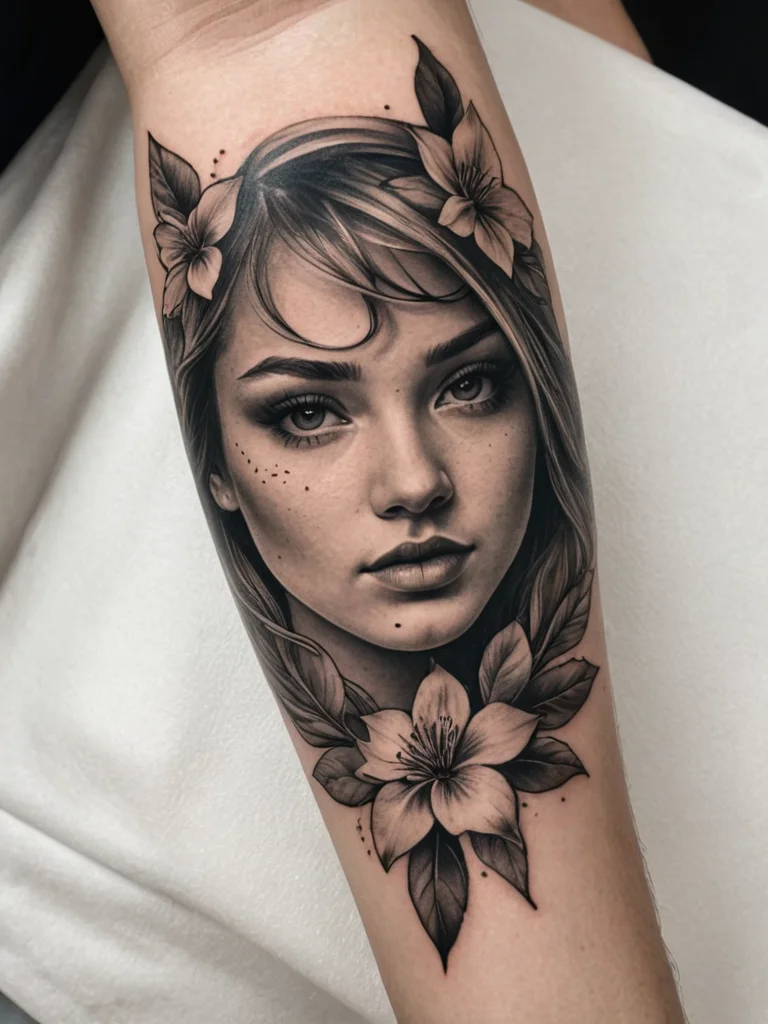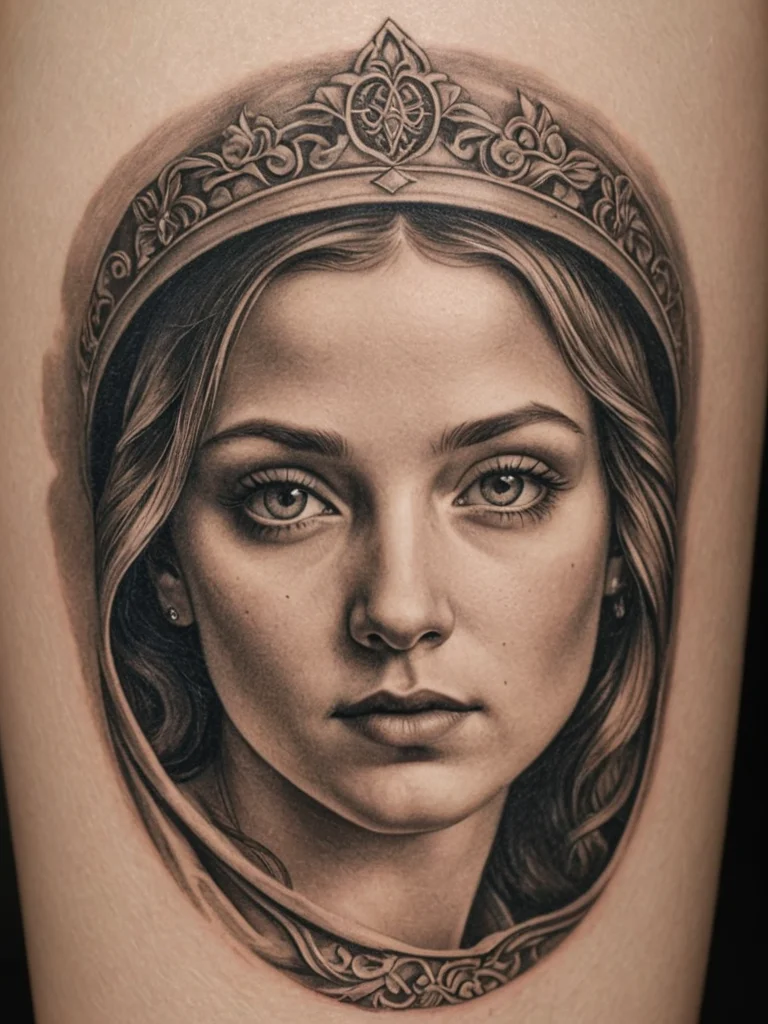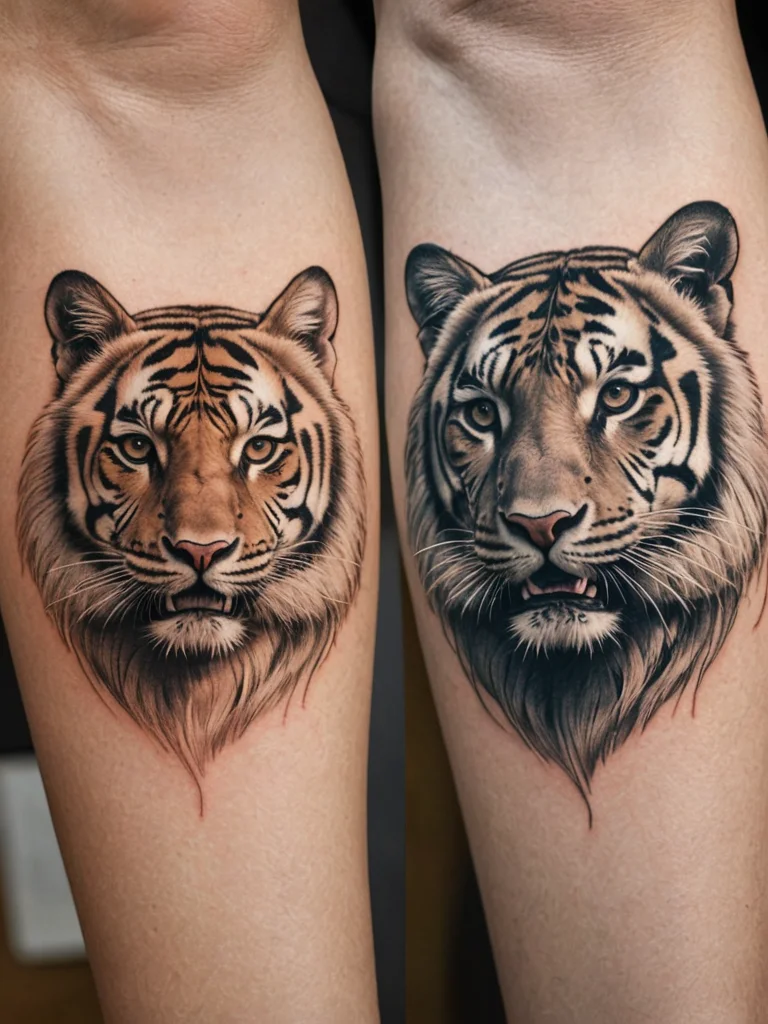In the ever-evolving world of tattoo art, styles come and go, each leaving its unique mark on the canvas of human skin. Among the most captivating and increasingly popular styles is the engraving or etching tattoo. This style, reminiscent of the intricate linework found in old books, historical illustrations, and classical art prints, offers a distinctive aesthetic that sets it apart from other tattoo genres.
The appeal of engraving tattoos lies in their ability to evoke a sense of timelessness and sophistication. They offer a connection to the past, echoing the artistry of master engravers who meticulously crafted images using fine lines and precise shading. If you are looking for a tattoo that is both visually striking and rich in history, the engraving style might be the perfect choice for you.
How to recognize an engraving/etching tattoo: 7 key characteristics (linework, shading, subject matter)
Identifying an engraving tattoo is relatively straightforward once you understand its core characteristics. The style draws heavily from traditional engraving and etching techniques, replicating the visual language of these art forms on skin. Here’s a breakdown of the key features:
- Fine Linework: This is the defining characteristic. Engraving tattoos rely almost exclusively on thin, precise lines to create form, texture, and depth. These lines are typically consistent in width and darkness, mimicking the effect of a sharp engraving tool cutting into a surface. Think of the delicate lines in old banknotes or scientific illustrations.
- Crosshatching and Stippling: Shading is achieved through crosshatching (intersecting lines) and stippling (patterns of dots). These techniques are crucial for creating tonal variations and a sense of volume. The closer the lines or dots, the darker the area appears. Imagine looking at a black and white photograph where the grey areas are created entirely by tiny dots.
- Monochromatic Palette: While color can be incorporated, most engraving tattoos are done in black ink to maintain the authentic look of traditional engravings. The focus is on the interplay of light and shadow created by the linework. Occasionally, a muted grey wash might be added to enhance the shading.
- Limited Use of Solid Black: Unlike other styles that utilize large areas of solid black, engraving tattoos generally avoid them. The emphasis is on creating form through linework and shading techniques. Solid black might be used sparingly for outlining or to emphasize certain details, but it’s not a dominant feature.
- Realistic or Illustrative Subject Matter: Engraving tattoos often feature realistic or illustrative subjects such as animals, plants, portraits, landscapes, and historical figures. The style lends itself well to detailed depictions of natural forms and intricate patterns. Think of the botanical illustrations in old textbooks or the detailed portraits in historical engravings.
- Emphasis on Detail: Because the style is based on fine lines and shading, engraving tattoos tend to incorporate a high level of detail. This can include intricate patterns, subtle textures, and nuanced expressions. The more detail, the more visually captivating the tattoo becomes.
- Art Historical References: Many engraving tattoos draw inspiration directly from historical engravings, woodcuts, and etchings. Artists might replicate famous artworks or adapt elements from these sources to create original designs. A tattoo might feature a quote surrounded by ornamental details inspired by an old book.
By understanding these characteristics, you can easily identify an engraving tattoo and appreciate the skill and artistry involved in creating one.
The history & meaning behind engraving tattoo art: from renaissance prints to modern skin

To truly appreciate the engraving tattoo style, it’s essential to understand its historical roots. The style directly references traditional engraving and etching techniques, which have a rich history dating back to the Renaissance.
Engraving, as a printmaking technique, emerged in Europe during the 15th century. Artists used a tool called a burin to carve lines directly into a metal plate, typically copper. The plate was then inked, and the ink was wiped from the surface, leaving ink only in the engraved lines. When paper was pressed against the plate, the ink transferred, creating a print. Famous engravers like Albrecht Dürer elevated the art form to new heights with their intricate and detailed prints. Dürer’s works, such as “Melancholia I” and “Knight, Death and the Devil,” are prime examples of the engraving technique’s capabilities. The fine lines, complex shading, and symbolic imagery found in these prints continue to inspire artists today.
Etching, another related technique, involves using acid to create lines in a metal plate. The plate is coated with a protective layer of wax or varnish, and the artist draws through the coating with a needle. The plate is then immersed in acid, which etches the exposed lines. This process allows for a more fluid and expressive line than engraving. Artists like Rembrandt van Rijn were masters of etching, using the technique to create powerful and emotive images.
The revival of these techniques in tattoo art represents a fascinating intersection of history and contemporary culture. By adopting the visual language of engraving and etching, tattoo artists are not only creating visually stunning pieces but also paying homage to the rich artistic heritage of the past. The style can evoke a sense of nostalgia, sophistication, and intellectual curiosity. It also carries symbolic weight. The permanence of a tattoo combined with the historical significance of the engraving style can be interpreted as a statement about enduring values, artistic appreciation, or a connection to the past. The choice of subject matter in an engraving tattoo can further enhance its meaning. For example, a tattoo featuring a historical figure might represent admiration for their accomplishments, while a tattoo depicting a natural scene could symbolize a connection to nature or a sense of place.
Consider the symbolic weight of choosing an engraving style for a portrait tattoo. Instead of a modern, photorealistic depiction, the engraving style adds a layer of historical significance. It suggests that the person being depicted is not just a contemporary individual but someone worthy of being immortalized in a classic, timeless style. Ultimately, the meaning of an engraving tattoo is personal and subjective, but the historical context of the style adds depth and complexity to the artwork.
Engraving tattoo inspiration: 20+ design ideas for men & women (animals, landscapes, portraits, and symbols)

The versatility of the engraving tattoo style makes it suitable for a wide range of designs. Whether you’re drawn to animals, landscapes, portraits, or symbols, the intricate linework and shading can bring a unique level of depth and sophistication to your tattoo.
Animal Tattoos:
- Lion: A classic symbol of strength and courage, a lion depicted in the engraving style can be particularly striking. The fine lines can capture the texture of the mane and the intensity of the gaze.
- Wolf: Representing loyalty, intelligence, and independence, a wolf engraving tattoo can convey a sense of mystery and power. The intricate linework can emphasize the wolf’s fur and its piercing eyes.
- Owl: A symbol of wisdom and knowledge, an owl engraving tattoo can be both beautiful and meaningful. The detailed linework can capture the intricate patterns of the owl’s feathers.
- Elephant: Representing memory, wisdom, and family, an elephant engraving tattoo can be a powerful symbol. The fine lines can capture the texture of the elephant’s skin and its gentle demeanor.
- Birds: From eagles to sparrows, birds are a popular choice for engraving tattoos. They can symbolize freedom, hope, and transcendence. A flock of birds can create a dynamic and visually stunning design.
Landscape Tattoos:
- Mountains: Representing challenges, strength, and perseverance, a mountain landscape engraving tattoo can be a powerful reminder of your own resilience. The fine lines can capture the rugged beauty of the mountains.
- Forests: Symbolizing growth, mystery, and the interconnectedness of life, a forest engraving tattoo can be a beautiful and evocative design. The intricate linework can capture the dense foliage and the play of light and shadow.
- Oceans: Representing vastness, change, and the unknown, an ocean engraving tattoo can be a powerful symbol of exploration and adventure. The fine lines can capture the movement of the waves and the depth of the sea.
- Deserts: Symbolizing resilience, solitude, and the beauty of simplicity, a desert engraving tattoo can be a unique and striking design. The intricate linework can capture the textures of sand and rock.
- Trees: From ancient oaks to delicate willows, trees are a popular choice for engraving tattoos. They can symbolize growth, strength, and connection to nature.
Portrait Tattoos:
- Historical Figures: Engraving style portraits of historical figures like Frida Kahlo, Abraham Lincoln, or Marie Curie offer a unique way to honor their legacy and accomplishments.
- Loved Ones: An engraving style portrait of a family member or close friend adds a touch of timeless elegance to a tribute tattoo.
- Literary Characters: Depicting characters from your favorite books in an engraving style can be a powerful way to express your literary passions.
- Musical Icons: Honoring your musical heroes with engraving-style portraits can showcase your appreciation for their artistry and influence.
- Self-Portraits: A self-portrait in the engraving style can be a unique and introspective form of self-expression.
Symbolic Tattoos:
- Astrological Symbols: Zodiac signs and planetary symbols can be rendered in the engraving style for a personalized and meaningful tattoo.
- Alchemical Symbols: These ancient symbols represent transformation, balance, and spiritual growth.
- Runes: Norse runes offer a connection to ancient wisdom and powerful symbolism.
- Geometric Patterns: Intricate geometric patterns can be adapted to the engraving style for a visually stunning and symbolic tattoo.
- Religious Symbols: Crosses, mandalas, and other religious symbols can be given a unique aesthetic with the engraving style.
Remember to consider the size and placement of your tattoo when choosing a design. The intricate linework of engraving tattoos requires a skilled artist and careful planning to ensure the design translates well onto the skin.
Choosing the right artist & aftercare: how to ensure your engraving tattoo looks stunning for years

Selecting the right artist is paramount to achieving a stunning engraving tattoo. This style demands precision, a deep understanding of linework, and an appreciation for the historical context of engraving and etching techniques. Not all tattoo artists are proficient in this style, so thorough research is crucial.
Finding the Right Artist:
- Portfolio Review: The most important step is to carefully review the artist’s portfolio. Look for examples of engraving tattoos or similar styles that demonstrate their ability to create clean, precise lines and effective shading. Pay attention to the details and the overall quality of the artwork.
- Experience and Specialization: Inquire about the artist’s experience with engraving tattoos. Do they specialize in this style, or is it something they dabble in occasionally? An artist who specializes in engraving tattoos is more likely to have the skills and knowledge necessary to create a truly exceptional piece.
- Consultation: Schedule a consultation with the artist to discuss your design ideas and get their input. A good artist will be able to advise you on the best way to translate your vision into an engraving tattoo. They should also be able to explain the process and answer any questions you may have.
- Hygiene and Safety: Ensure that the artist works in a clean and sterile environment. They should use disposable needles and follow proper sanitation procedures to prevent infection. Don’t hesitate to ask about their sterilization practices.
- Read Reviews and Testimonials: Check online reviews and testimonials to see what other clients have to say about the artist’s work and professionalism. This can give you valuable insights into their skills and customer service.
Aftercare:
Proper aftercare is essential for ensuring that your engraving tattoo heals properly and looks its best for years to come. Follow the artist’s instructions carefully, as they may vary depending on the specific ink and techniques used.
- Keep it Clean: Gently wash the tattoo with mild soap and water several times a day to remove any bacteria or debris.
- Moisturize: Apply a thin layer of fragrance-free, hypoallergenic moisturizer to keep the skin hydrated and prevent scabbing.
- Avoid Sunlight: Protect the tattoo from direct sunlight, as it can fade the ink. Wear loose-fitting clothing or apply sunscreen with a high SPF.
- Don’t Pick or Scratch: Resist the urge to pick or scratch the tattoo, as this can damage the ink and lead to infection.
- Avoid Soaking: Avoid soaking the tattoo in water for extended periods, such as swimming or taking baths.
- Stay Hydrated: Drinking plenty of water can help keep your skin hydrated and promote healing.
By choosing the right artist and following proper aftercare procedures, you can ensure that your engraving tattoo remains a stunning piece of art for years to come. The intricate linework and timeless aesthetic of this style will continue to captivate and inspire for generations.